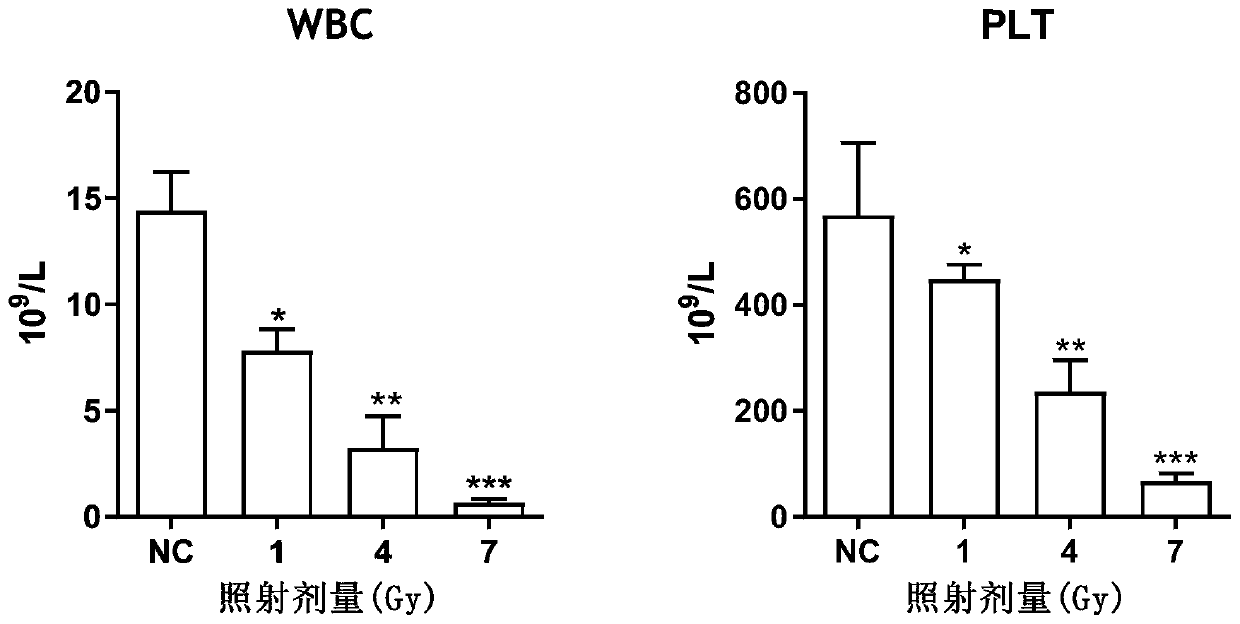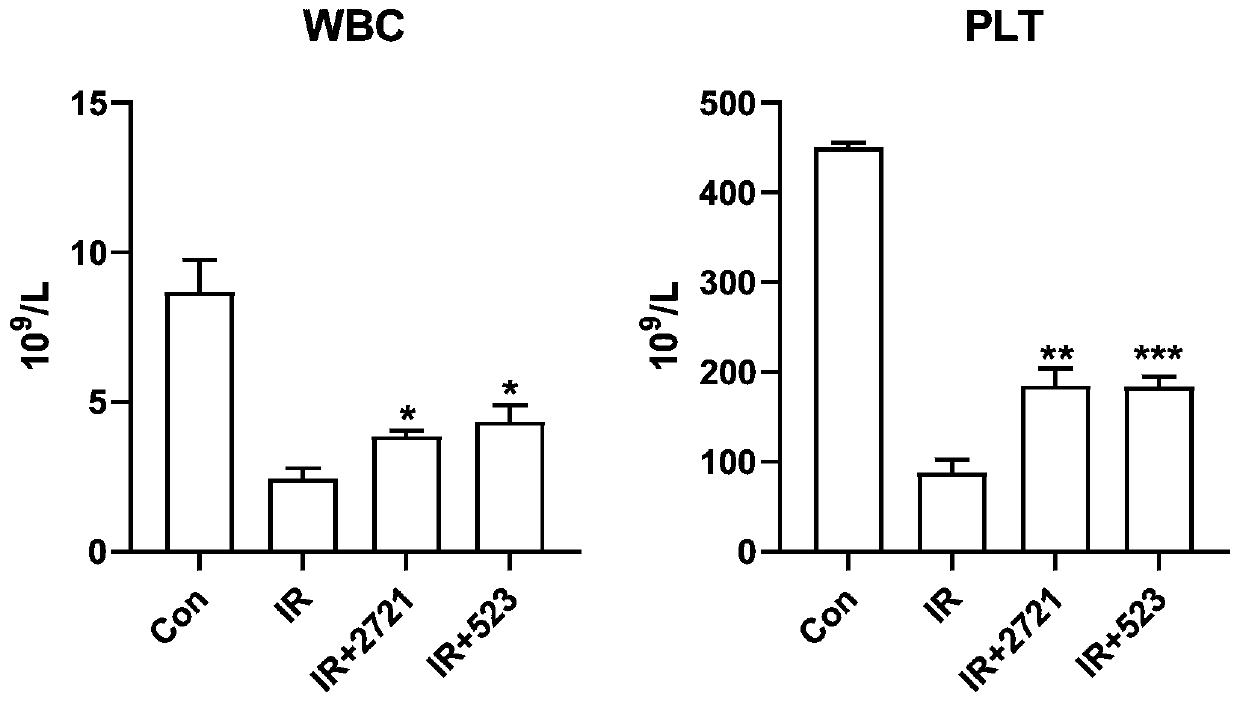Plasma miRNA combination for predicting ionizing radiation damage degree
A radiation damage, plasma technology, used in DNA/RNA fragments, recombinant DNA technology, determination/inspection of microorganisms, etc.
- Summary
- Abstract
- Description
- Claims
- Application Information
AI Technical Summary
Problems solved by technology
Method used
Image
Examples
Embodiment 1
[0057] Example 1. With the increase of irradiation dose, the body weight of mice gradually decreased
[0058] 6-8 weeks C57BL / 6 mice, 20, were randomly divided into control group (NC), different irradiation dose groups (1, 4, 7Gy) ( 60 Coγ-rays), 5 rats in each group. The body weight of the mice was weighed on the seventh day after irradiation.
[0059] The result is as figure 1 shown. It shows that with the increase of the irradiation dose, the body weight of the mice gradually decreases, indicating that the damage is gradually aggravated. Among them, the 7Gy irradiation group was significantly different from the control group (**P<0.01).
Embodiment 2
[0060] Example 2. With the increase of irradiation dose, WBC and PLT in the peripheral blood of mice gradually decreased
[0061] 20 C57BL / 6 mice at 6-8 weeks were randomly divided into control group (NC), different irradiation dose groups (1, 4, 7Gy) ( 60 Coγ-rays), 5 rats in each group. On the seventh day after irradiation, blood was collected through the tail vein to detect the number of white blood cells (WBC) and platelets (PLT) in the peripheral blood of the mice.
[0062] The result is as figure 2 As shown, it is shown that with the increase of the irradiation dose, the number of white blood cells (WBC) and platelets (PLT) in the peripheral blood of mice gradually decreased, indicating that the damage gradually increased. There were significant differences between each radiation dose and the control (*P<0.05; **P<0.01; ***P<0.001).
Embodiment 3
[0063] Example 3: Anti-radioactive drugs WR-2721 and 523 can significantly reduce radiation damage under the same irradiation dose
[0064] 20 C57BL / 6 mice at 6-8 weeks were randomly divided into control group (NC), irradiation group (8Gy, 60 Coγ-rays), the amifostine (WR2721) group was irradiated (150mg / kg WR-2721 was injected intraperitoneally 30min before 8Gy irradiation), and the nilestriol (523) group was given nylestriol (523) before irradiation (10mg / kg intragastric administration 48h before irradiation) kg 523), 5 in each group. On the seventh day after irradiation, blood was collected through the tail vein to detect the number of white blood cells (WBC) and platelets (PLT) in the peripheral blood of the mice.
[0065] The anti-radiation drug Nylestriol (523) was prepared by the Institute of Radiation Medicine, Academy of Military Medicine, Academy of Military Sciences, and Amifostine (WR-2721) was obtained from Dalian Merro Pharmaceutical Factory.
[0066] The resul...
PUM
 Login to View More
Login to View More Abstract
Description
Claims
Application Information
 Login to View More
Login to View More - R&D
- Intellectual Property
- Life Sciences
- Materials
- Tech Scout
- Unparalleled Data Quality
- Higher Quality Content
- 60% Fewer Hallucinations
Browse by: Latest US Patents, China's latest patents, Technical Efficacy Thesaurus, Application Domain, Technology Topic, Popular Technical Reports.
© 2025 PatSnap. All rights reserved.Legal|Privacy policy|Modern Slavery Act Transparency Statement|Sitemap|About US| Contact US: help@patsnap.com



